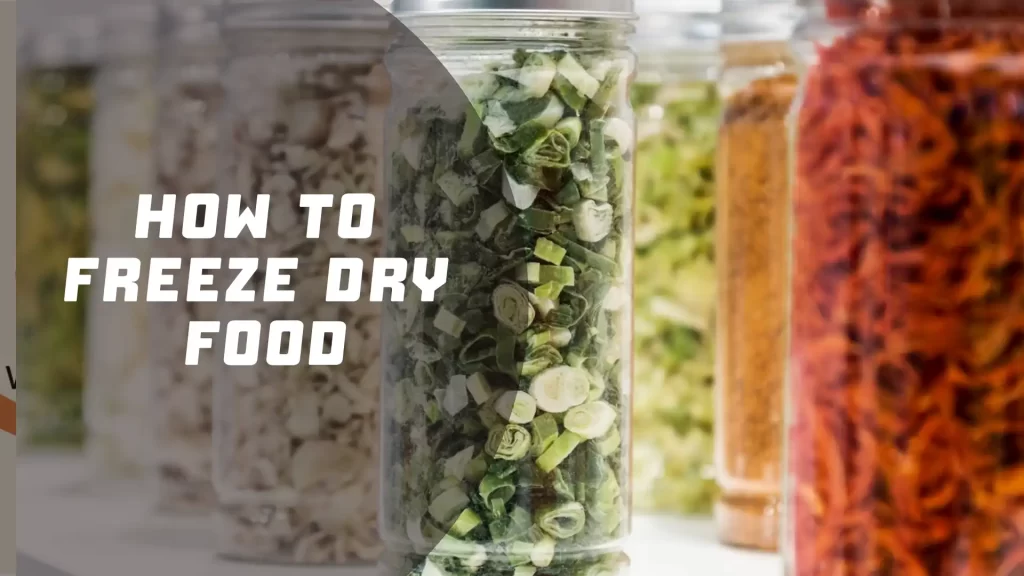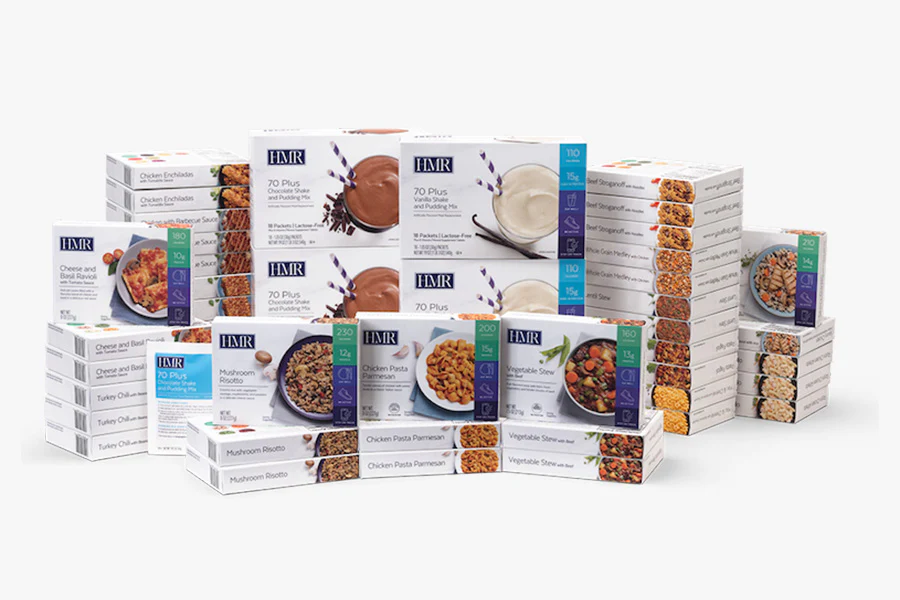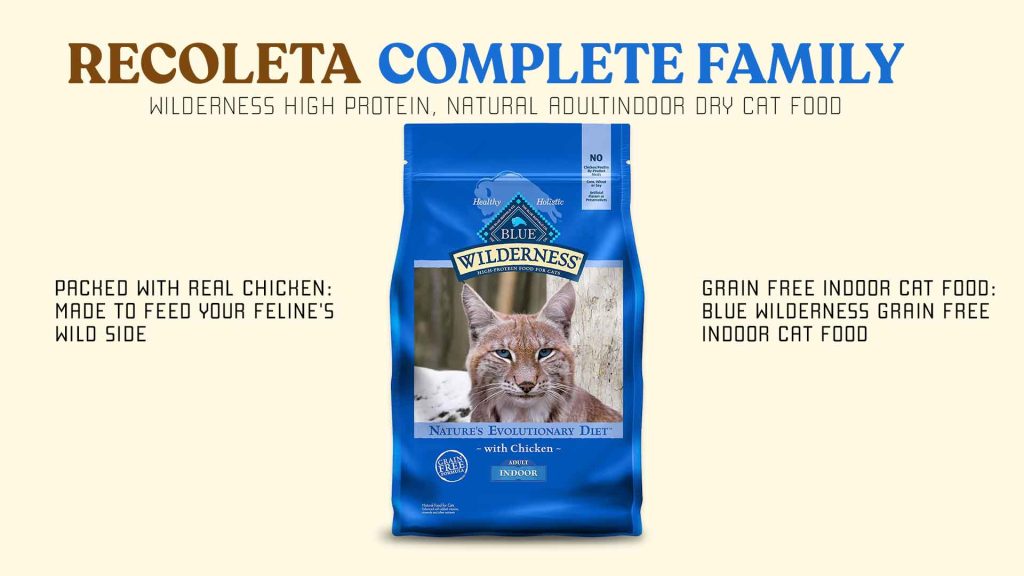How to freeze dry food, Freeze drying, also known as lyophilization, is a food preservation method that involves removing water from food by sublimation, the process of converting water from a solid state (ice) directly into a vapor state. Freeze-drying food helps to maintain its nutritional content, flavor, and texture for long periods, making it an ideal method for preserving food for emergency or long-term storage.
In the article, How to freeze dry food in the following steps:
how to freeze dry food Step 1: Selecting the food Before you start freeze-drying, select the food you want to preserve. Almost any food can be freeze-dried, including fruits, vegetables, meats, and dairy products. However, it’s important to note that the quality of the food being freeze-dried affects the final product, so it’s best to select fresh, high-quality food.
How to freeze dry food Step 2: Preparing the food Once you’ve selected your food, you’ll need to prepare it for the freeze-drying process. This involves washing the food and cutting it into small, uniform pieces. It’s essential to make sure the food is evenly sized to ensure it dries at the same rate.
How to freeze dry food Step 3: Freezing the food After preparing the food, it’s time to freeze it. You can use a freezer to do this or place the food in a container and put it in a blast freezer. Blast freezers are ideal as they freeze the food quickly and help to preserve the food’s texture and taste. You should freeze the food until it is completely solid.
How to freeze dry food Step 4: Loading the freeze-dryer The next step is to load the freeze-dryer with the frozen food. Follow the manufacturer’s instructions to load the machine correctly. Be sure to leave enough space between the food pieces for the air to circulate.
How to freeze dry food Step 5: Starting the freeze-dryer Once you’ve loaded the freeze-dryer, turn it on and set the temperature according to the manufacturer’s instructions. The machine will begin to create a vacuum, which will lower the pressure and temperature, causing the ice in the food to sublimate into water vapor.
How to freeze dry food Step 6: Monitoring the process The freeze-drying process can take anywhere from a few hours to several days, depending on the food being dried and the size of the freeze-dryer. It’s essential to monitor the process to ensure the food dries completely. Check the temperature, pressure, and vacuum levels regularly.
How to freeze dry food Step 7: Removing the freeze-dried food Once the freeze-drying process is complete, turn off the machine and allow it to cool down. Then, remove the freeze-dried food from the machine and store it in an airtight container. The food can be stored at room temperature for several years, making it an excellent option for long-term storage.
In conclusion, how to freeze dry food, freeze-drying food is an excellent method for preserving food for long periods. By following these steps and using the appropriate equipment, you can ensure that your freeze-dried food maintains its nutritional content, flavor, and texture for years to come.
Can you freeze dry food without a machine?
How to freeze dry food without a machine is possible but it can be a difficult and time-consuming process. Freeze-drying requires low temperatures and a vacuum to remove the water from the food. Without a freeze-dryer machine, you will need to use a process called “home freeze-drying” which involves the use of dry ice or liquid nitrogen.
To freeze-dry food without a machine, you will need to follow these steps:
Step 1: Freeze the food Place the prepared food in a single layer on a tray lined with parchment paper and place it in the freezer. Make sure that the food is completely frozen and solid.
Step 2: Place the frozen food in a vacuum chamber You will need to create a vacuum chamber to remove the water from the frozen food. You can use a glass jar with a lid or a vacuum seal bag. Place the frozen food in the jar or bag and seal it tightly.
Step 3: Use dry ice or liquid nitrogen Place dry ice or liquid nitrogen in a container or a plastic bag and put the vacuum-sealed food in the same container. The dry ice or liquid nitrogen will help to create a vacuum and remove the water from the food.
Step 4: Wait for the food to freeze dry Let the food stay in the vacuum chamber until it is completely dry. This can take several hours or even a few days, depending on the food and the amount of moisture present.
Step 5: Store the freeze-dried food Once the food is completely dry, you can store it in an airtight container in a cool and dry place.

It’s important to note that freeze-drying food without a machine can be challenging and may not produce the same results as a freeze-drying machine. The process is also time-consuming, and the equipment required can be costly. Therefore, if you plan on freeze-drying food regularly, it’s recommended to invest in a freeze-dryer machine for more efficient and effective results.
What is the process to freeze dry food?
The process to freeze-dry food, also known as lyophilization, involves several steps to remove moisture from food while preserving its nutritional value and flavor. Here are the main steps involved in freeze-drying food:
Step 1: Preparation The first step in freeze-drying food is to prepare the food. This involves washing and cutting the food into small, uniform pieces. It’s important to ensure that the food is evenly sized so that it dries at the same rate.
Step 2: Freezing Once the food is prepared, it’s frozen to a temperature below its freezing point. Freezing the food solid helps to reduce the amount of time it takes to dry and improves the quality of the final product.
Step 3: Primary Drying The frozen food is then placed in a vacuum chamber, and the pressure is lowered. This causes the water to evaporate from the frozen food without going through the liquid phase, a process known as sublimation. During primary drying, the temperature of the food is gradually increased, and the water vapor is collected on a condenser.
Step 4: Secondary Drying After the primary drying phase, the food is moved to a secondary drying stage to remove any remaining moisture. In this phase, the temperature is increased further, and the pressure is reduced to an even lower level to remove any residual water. This phase is critical to ensure the food is completely dry and stable for storage.
Step 5: Packaging and Storage Once the freeze-drying process is complete, the food is removed from the freeze-dryer and packaged in airtight containers to prevent moisture from entering the food. Freeze-dried food can be stored at room temperature for extended periods of time, making it a convenient option for emergency food supplies or outdoor activities.
In conclusion, freeze-drying is a popular food preservation method that involves several steps to remove moisture from food while preserving its nutritional value and flavor. The process is complex and requires specialized equipment, but it produces high-quality, shelf-stable products that can last for years.
How long does it take to freeze dry food at home?
The time it takes to freeze-dry food at home can vary depending on several factors, such as the type of food being dried, the size of the food pieces, and the equipment being used. In general, freeze-drying food at home can take anywhere from 24 hours to several days.
The primary drying phase, during which the majority of the moisture is removed from the food, typically takes the longest. This phase can take anywhere from 18 to 36 hours, depending on the food being dried and the equipment being used. The length of the primary drying phase can also depend on the thickness of the food and the temperature and pressure settings on the freeze-dryer.
The secondary drying phase, during which any remaining moisture is removed from the food, typically takes less time than the primary drying phase. This phase can take anywhere from 6 to 12 hours, again depending on the food being dried and the equipment being used.
It’s important to note that the time it takes to freeze-dry food at home can also be affected by the amount of food being dried. Drying larger quantities of food may take longer than drying smaller amounts.
In summary, the time it takes to freeze-dry food at home can vary depending on several factors, but the process can take anywhere from 24 hours to several days.
Is it better to freeze-dry or dehydrate food?
Freeze-drying and dehydration are both methods of food preservation, but they differ in terms of the quality of the final product, the length of storage time, and the overall process.
Freeze-drying, also known as lyophilization, is a process that involves freezing the food and then using a vacuum to remove the water in the form of vapor. Freeze-dried foods have a longer shelf life, retain their flavor and nutrients better, and can be rehydrated more quickly than dehydrated foods. However, the process of freeze-drying is more complex and requires specialized equipment, making it more expensive than dehydration. Additionally, freeze-dried foods are typically more fragile and can be more easily crushed than dehydrated foods.
Dehydration, on the other hand, is a simpler and more affordable method of food preservation that involves removing moisture from the food by circulating hot, dry air over it. Dehydrated foods have a longer shelf life than fresh food, but not as long as freeze-dried foods. Dehydrated foods also tend to have a more concentrated flavor due to the removal of water. However, dehydration can cause some loss of nutrients and flavor, and the texture of the food can change.
In general, freeze-drying is better suited for foods that are more delicate or that require a longer shelf life, such as fruits, vegetables, and meats. Dehydration is a better choice for foods that can tolerate higher temperatures and that are not as susceptible to moisture, such as grains, beans, and jerky.
In conclusion, the choice between freeze-drying and dehydration depends on the specific food being preserved, the desired shelf life, and the intended use. Both methods have their advantages and disadvantages, and it’s important to consider these factors when choosing a preservation method.
How long will freeze-dried food last?
Freeze-dried food is a popular choice for long-term food storage because it can last for an extended period of time without spoiling. The shelf life of freeze-dried food can vary depending on several factors, such as the type of food being preserved, the storage conditions, and the packaging. Here are some general guidelines for how long freeze-dried food can last:
- Fruits and vegetables: Freeze-dried fruits and vegetables can last for 20 to 30 years when stored properly in a cool, dry place in airtight packaging.
- Meat and poultry: Freeze-dried meat and poultry can last for 15 to 25 years when stored properly in a cool, dry place in airtight packaging.
- Dairy products: Freeze-dried dairy products, such as milk and cheese, can last for 10 to 20 years when stored properly in a cool, dry place in airtight packaging.
It’s important to note that the shelf life of freeze-dried food can be affected by storage conditions. To ensure the longest possible shelf life, freeze-dried food should be stored in a cool, dry place, away from light and moisture. It’s also important to store freeze-dried food in airtight packaging, such as metal cans or Mylar bags, to prevent exposure to oxygen and moisture.
In conclusion, freeze-dried food can last for many years when stored properly in a cool, dry place in airtight packaging. The shelf life can vary depending on the type of food being preserved, but in general, freeze-dried food is an excellent option for long-term food storage.
Is freeze-dried food worth it?
Freeze-dried food can be a great option for those who are looking for long-term food storage or for those who enjoy outdoor activities like camping, hiking, or backpacking. Here are some reasons why freeze-dried food can be worth it:
- Long shelf life: Freeze-dried food can last for many years without spoiling, making it a great option for emergency preparedness or for stocking up on food for future use.
- Nutrient retention: Freeze-drying preserves the nutritional value of the food, making it a healthier option than many other types of preserved food.
- Lightweight and portable: Freeze-dried food is lightweight and compact, making it easy to transport for outdoor activities or for storing in small spaces.
- Convenient: Freeze-dried food is easy to prepare, requiring only the addition of water in most cases.
- Great taste: Freeze-dried food retains its flavor and texture, making it a delicious option for meals and snacks.
However, it’s important to note that freeze-dried food can be more expensive than other types of preserved food, and it requires specialized equipment for preparation. Additionally, some people may not like the taste or texture of freeze-dried food, so it’s important to try different brands and varieties before committing to a large purchase.
In conclusion, freeze-dried food can be worth it for those who are looking for long-term food storage or for those who enjoy outdoor activities. The long shelf life, nutritional value, convenience, and great taste make freeze-dried food a popular choice for many people. However, it’s important to consider the cost and potential drawbacks before making a purchase.
Is freeze-drying food a good idea?
Freeze-drying food can be a good idea for certain situations, such as long-term food storage or for outdoor activities like camping or hiking. Here are some reasons why freeze-drying food can be a good idea:
- Long shelf life: Freeze-dried food can last for many years without spoiling, making it a great option for emergency preparedness or for stocking up on food for future use.
- Nutrient retention: Freeze-drying preserves the nutritional value of the food, making it a healthier option than many other types of preserved food.
- Lightweight and portable: Freeze-dried food is lightweight and compact, making it easy to transport for outdoor activities or for storing in small spaces.
- Convenient: Freeze-dried food is easy to prepare, requiring only the addition of water in most cases.
- Great taste: Freeze-dried food retains its flavor and texture, making it a delicious option for meals and snacks.
However, it’s important to note that freeze-drying food can be expensive and requires specialized equipment. Additionally, some people may not like the taste or texture of freeze-dried food, so it’s important to try different brands and varieties before committing to a large purchase.
In conclusion, freeze-drying food can be a good idea for those who are looking for long-term food storage or for those who enjoy outdoor activities. The long shelf life, nutritional value, convenience, and great taste make freeze-dried food a popular choice for many people. However, it’s important to consider the cost and potential drawbacks before making a purchase.






